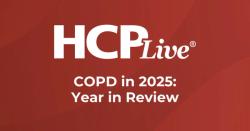
OR WAIT null SECS
Genetic Study Identifies Several Key Risk Factors Linked to Developing Psoriasis
These data on genetic correlations allow for new genetic evidence connecting psoriasis and patients’ socioeconomic status.
Six psoriasis risk loci were identified in recent findings, with this genome-wide analysis providing genetic evidence for a close association between psoriasis and socio-economic status, mood symptoms, obesity, and education level.1
This analysis, led by Anni Heikkilä of the University of Oulu’s research unit of population health in Finland, was carried out by the investigators to identify additional risk loci for developing psoriasis. Heikkilä et al. noted that heritability of psoriasis has been estimated to be around 70% and known risk loci have been previously reported interleukin (IL)-23/IL-27-signaling pathway-related genes as well as others.2,3
“To do this, we analyzed genome-wide data of over 900000 people from Finland (FinnGen), Estonia (The Estonian Biobank), and United Kingdom (UK Biobank),” Heikkilä and colleagues wrote. “We further utilized the newly generated genome-wide results to evaluate genetic correlations and causal inferences between psoriasis and other traits.”1
Background and Methods
The investigators noted the human leukocyte antigen (HLA) region and especially HLA-C, are known risk loci for psoriasis. Another association with psoriasis is that of kappa-light-chain-enhancers of activated B-cells (NF-κB)- as well as genes related to interleukin (IL)-23/IL-27-signaling pathways.
The research team also cited the known epidemiological risk factors which impact psoriasis risk, highlighting smoking, stress, and obesity, as well as some others. Many different comorbidities have also been known to be linked with psoriasis, including other inflammatory conditions, cardiovascular diseases, and psychiatric issues.
The team set out to enhance the overall understanding of genetic risk factors, carrying out a genome-wide association study (GWAS) on the genome-wide information of more than 900000 individuals included in the UK Biobank, FinnGen, and the Estonian Biobank. Specifically, the initial GWAS used FinnGenn and was later followed by a replication study and meta-analysis using the data from both the Estonian Biobank and UK Biobank.
The investigators' combined analyses involved a total of 925,649 subjects, with 22,659 psoriasis cases and 902,990 controls specifically. This made the study’s sample size the most extensive, in terms of psoriasis research, to date.
The research teams’ subsequent analyses were done to more closely assess the genetic correlations and potential causal relationships between psoriasis and various traits, looking at 99 phenotypes and these traits and their associations.
Findings
Six previously-unidentified loci associated with risk of developing psoriasis were reported on by the investigators. One key aspect of pathogenesis of psoriasis is the excessive proliferation of keratinocytes, the primary cells in the epidermis.
A likely candidate gene which the research team identified was the FGFR4 gene at 5q35.3, noted in a FinnGen-specific locus, and this is due to its role as a fibroblast growth factor receptor which is also known to promote keratinocyte proliferation. This contributes substantially to the characteristic hyperproliferation in skin affected by psoriasis.
Another notable feature of psoriatic skin is increased angiogenesis, or the formation of new blood vessels. This is also linked to the proliferation of keratinocytes among those with psoriasis. The remaining candidate genes reported by the investigators were noted as appearing to be involved with patients’ immune systems, with various roles potentially involved in the disease process.
Genetic correlations were found by the research team between 319 different phenotypes and psoriasis, some of which included traits related to body measurements, physical activity, other forms of disease, smoking, mood, pain, medication use, education level, and blood metabolites.
A few of the major traits highlighted, such as smoking, higher disease prevalence, high body mass index (BMI), lower attainment of education, and having children at a younger age, were described by the team as linked with lower socioeconomic status. Therefore, lower socioeconomic status was linked to exacerbations of psoriasis symptoms.
“With Mendelian randomization we found evidence of causal relationships between obesity and psoriasis, psoriasis and mood symptoms, and complex causal relationships between psoriasis and low education level,” they wrote. “Our findings deepen understanding of psoriasis and may be useful in treatment development.”
References
- Heikkilä A, Sliz E, Kettunen J, et al. GENETIC STUDY OF PSORIASIS HIGHLIGHTS ITS CLOSE LINK WITH SOCIO-ECONOMIC STATUS AND AFFECTIVE SYMPTOMS. J Invest Dermatol. 2024 May 17:S0022-202X(24)00358-0. doi: 10.1016/j.jid.2024.03.043. Epub ahead of print. PMID: 38763176.
- Lønnberg AS, Skov L, Thomsen SF, et al. Heritability of psoriasis in a large twin sample. British Journal of Dermatology. 2013; 169 (Available from:): 412-416. https://onlinelibrary.wiley.com/doi/10.1111/bjd.12375.
- Nair RP, Duffin KC, Goldgar D, et al. Genome-wide scan reveals association of psoriasis with IL-23 and NF-κB pathways. Nat Genet. 2009; 41 (Available from): 199-204 http://www.nature.com/articles/ng.311.


